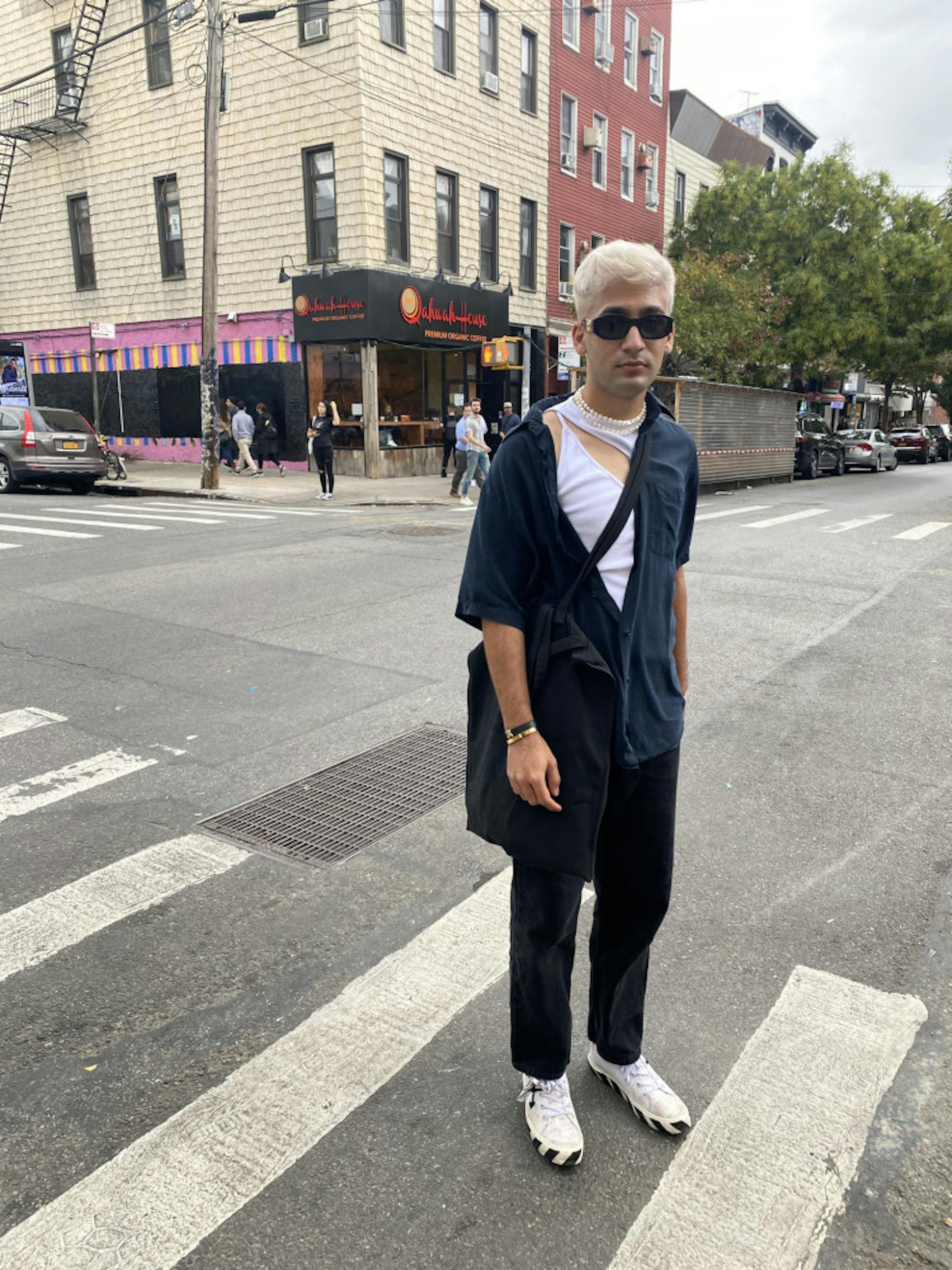Strolling through the Mayer Campus Center is like scrolling through a Pinterest board of Tufts style, where a hodgepodge of students’ aesthetics mix and mingle, collide and collage. Across a campus of over 6,000 people, Tufts fashion can’t be confined to exact archetypes. This series simply means to capture a glimpse of “Tufts style” or, perhaps more precisely, share what style means to Tufts, through the reflections of students in the ‘fashionable’ era of 2021.
https://www.youtube.com/watch?v=OqssJ7PTIP0
Kiara Mastropasqua: “No thoughts, just outfits”
For junior Kiara Mastropasqua, growing up in Los Angeles, Calif. largely influenced her understanding of clothes as a playful, natural representation of self.
“Los Angeles is a very urban, very fashion forward and, honestly, vain city,” Mastropasqua said. “I definitely took a lot of inspiration from people I saw walking on the street and that's been honestly one of the biggest culture shocks for me coming to a city like Boston. In Los Angeles, clothing and presentation is such a form of self-expression whereas I don't see that similar kind of ‘fun-ness’ in a city like Boston.”
Mastropasqua described gravitating toward clothing that resonated with her, really starting to experiment with different silhouettes and patterns in her sophomore year of high school.
“I always played around with how I wanted to feel, so sometimes it would be like super, super girly and I'd wear pretty dresses … or sometimes I'd wear huge men's pants and just feel cool in them,” she said.
Her favorite pieces are stolen from her parents’ closet: her dad’s colorful, knitted Coogi cardigan and her mom’s vintage mesh Agolde shirt. She described finding freedom in wearing different genres of clothes, saying that her style transitions in waves.
“Sometimes I'll be super into patterns and bold things and statement pieces [but] recently I've been much more into neutrals … I think part of that is also just general trends," she said. "And also where I am — I feel much more comfortable dressing very ‘out there’ when I'm home versus here."
Mastropasqua explained how context often plays a complex role in dictating how people present themselves.
“In my head, I'm like, 'You should just wear what you want when you want to wear it,'" she said. "Like if that means wearing a cocktail dress in the middle of the day, do what you need to do to feel good and if you feel good in it, you probably look good in it."
Throughout her experience at Tufts, people often complimented her clothing items in the framework of standing out as something ‘cool’ or that they could not ‘pull off,’ a concept that Mastropasqua found surprising compared to the culture in LA.
“I think people think a lot more about clothes [in LA] but it's a lot more normalized to do that … if someone's like, ‘Oh I like this’ at home, they're wearing something similar or they would wear something similar," she said.
Mastropasqua’s mind works like a clothes catalogue, she said, often remembering people based on what they wore.
Ultimately, she finds that dressing is not necessarily about trying to make a statement, but a mode of feeling most herself.
“Every single day during quarantine, I put on a little outfit, a full-on little outfit,” Mastropasqua said. "I was not leaving my house. But it's what made me feel good. And that’s also part of the reason I really know I get dressed for myself. Because I was alone in my house and I'd come down and my mom would be like, ‘You look so cute.’ And I’d be like, ‘Thank you. I'm not doing anything.’”
Kiyan Banuri: “Maturity through style”
Kiyan Banuri has an eye for the basic design principles of an outfit, keenly noting the balance of proportions, colors and materials. A junior from Salt Lake City, Utah, Banuri is drawn to textural and visual variance.
“I always say small shirt, big pants or small pants, big shirt or big boots, small shorts, big shirt,” Banuri said. "It's that or materials … if you wear all cotton, I find that kind of boring — mix it with leather, satin, stuff like that."
Banuri reflected on how his style transitioned in high school from buying clothes he instantly liked or was familiar with to now cultivating a more curated wardrobe. While others may opt for Pinterest spreads to organize inspiration for the upcoming season, Banuri said he compiles a detailed Excel spreadsheet, taking inventory each month.
“Everything I had, everything I liked, how it fit and what I wanted to fill in the gaps," Banuri said. "I started with basics and then moved my way up to things I don't really need but would like, such as a leather jacket. And slowly developed a color palette and a style palette."
Banuri pays close attention to the quality and durability of his clothes, investing in pieces that can last regardless of fluctuating trends.
“A lot of people might say that that's just like your style maturing — like we're going to be adults, we don't want to shop while we're constantly working full time, so I'm slowly starting to build a wardrobe,” he said.
Coming out as gay marked a significant change in Banuri’s style, as did the influence of camp culture.
“I think a lot of gay icons and camp culture, whether that be people in drag or just celebrities and fashion designers, they really like to play with … subversive basics,” he said. “They'll take basic clothes like a shirt, and they'll cut it up, they'll move the head hole into the sleeve, and they just play with a lot of fabrics … so you take those basics and you make them something different. I think that's something that I really look up to.”
Banuri is looking forward to more environmental sustainability in fashion and prefers secondhand shops, consistently going thrifting for inspiration and as a social event — something he started to do more of in college.
"I consistently go thrifting to find things that are interesting to me," Banuri said. "I think sometimes you go thrifting and you will never find the exact type of fit or style or color that you're looking for, but you can find things that can inspire you, so I usually go thrifting to inspire myself."
In commenting on aesthetics at Tufts, Banuri said that the fashion is individualized, noting that his international friends seem to have a different day-to-day style than his friends from the U.S.
“This is just an overstatement,” Banuri said. "But [students from the U.S.] like wearing things that they're comfortable in, but also they like playing with those things that they are comfortable in to make it stylish. So, like cuffing their pants, painting their shoes, embroidering their tote bags."
Banuri said he feels passionate about his clothing and carefully composing an outfit each morning gives him the energy to take on the day. Style also serves as his primary mode of expression and a way to engage with his identity.
“I think style really allowed me to connect with my queerness,” Banuri said. “It was really hard for me [too] at first … because I would wear things that I just didn't really feel comfortable in because I wasn't really out at the time. But once I did, and once I started experimenting with my style … I felt much more connected with that facet of my identity. And I think, you know, being queer at Tufts, you need a certain amount of confidence, and I think clothing really does give me that confidence.”






